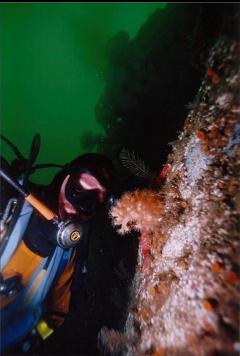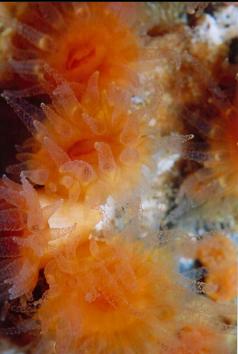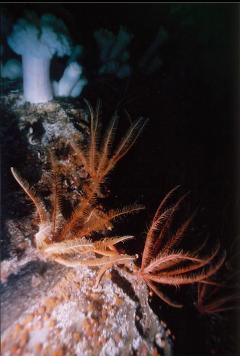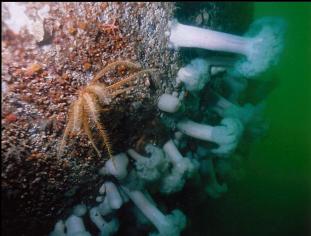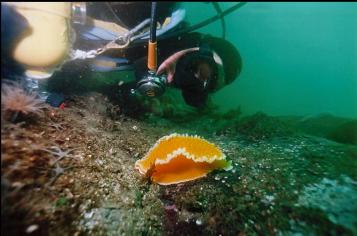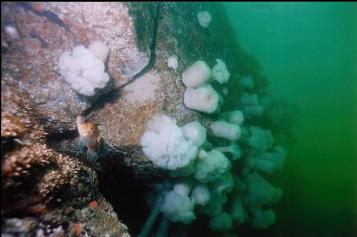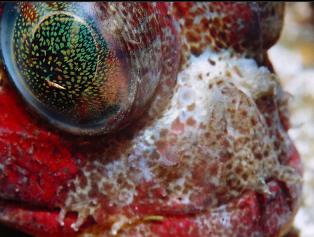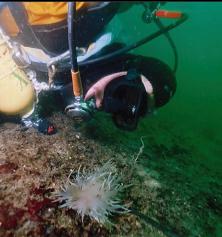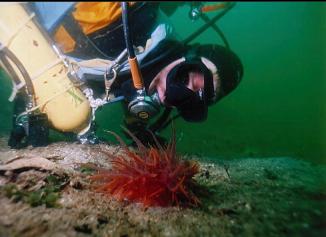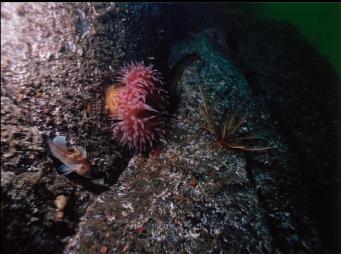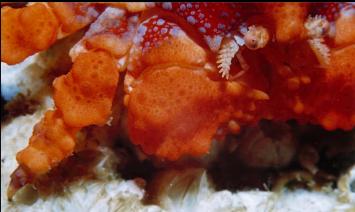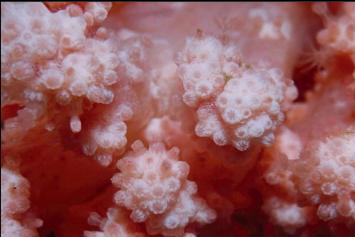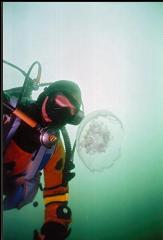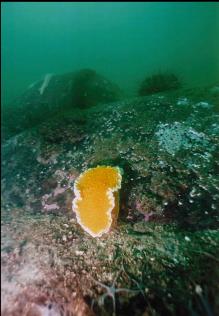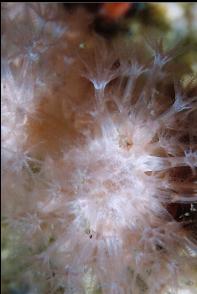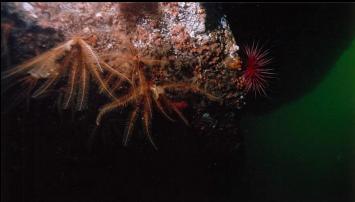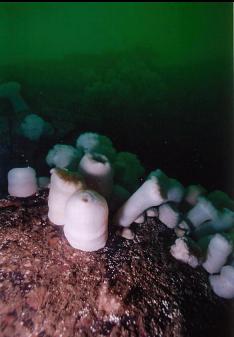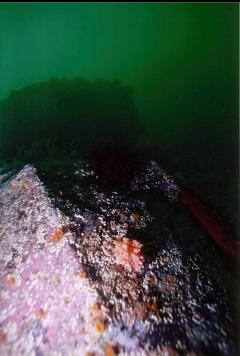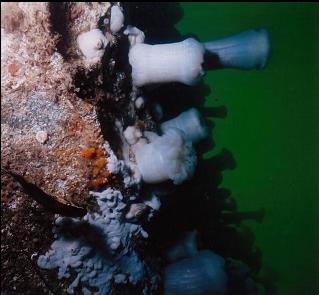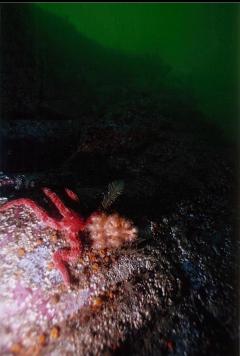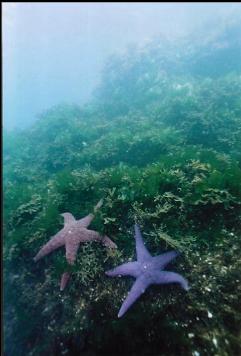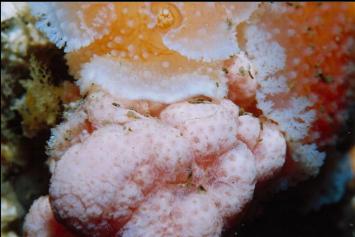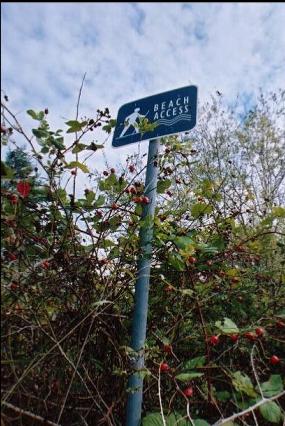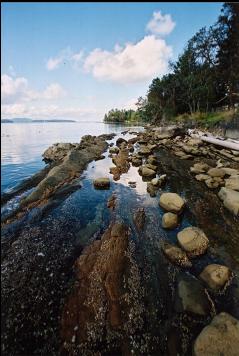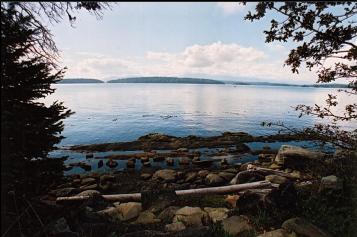This place is at the end of Spotlight Cove Road off Porlier Pass Road on the North-West part of Galiano Island. There is a short trail down to the sandstone beach (which isn't actually in Spotlight Cove, but just South of it). At the end of the trail, the bottom dropped down underwater in a little wall to about 10 feet. The rocks were covered in little barnacles, lettuce kelp and rockweed. At the base of this "wall", there was a wide, silty area with a few small reefs, with sea stars, perch and urchins living on them. I swam straight out and a bit to the left. I didn't bother to wait for slack and I didn't feel any current. At a depth of about 50 feet , I reached a wall that dropped down with overhangs and deep cracks. Visibility was about 20 feet (mid- September). Despite being farther from Porlier Pass than the "Government Wharf" dive, there seemed to be a lot more invertebrates here. At around 60 feet, the wall was covered with plumose anemones. They formed a band about 10 feet high that stretched along the wall. I didn't see many of them below or above the 60-70 foot range. There were lots of zoanthids and cup corals, especially under the overhangs. Patches of white encrusting tunicate colonies were on the wall around the anemones. Like the "Government Wharf" dive, this wall reminded me of those in the Nanaimo/Parksville area (maybe it's the sandstone) . Of course, the usual feather stars were everywhere. As I was swimming along, I saw a tiny puff of soft coral on the wall. It was the same kind I saw at the "Government Wharf" site. Then I saw another, and another. They weren't clustered together, but they seemed fairly common here in the 60-70 foot depths. One was being eaten by a couple of nudibranchs. There were also the usual quillback and copper rockfish, Irish lords and buffalo sculpins. Looking for sponges, I went down to the bottom of the wall at 100 feet to a slope of silt. No sponges. Back at the top of the wall, I noticed that a few of the boulders on the flat bottom were bright pink from encrusting coraline algae, while most were relatively bare. I realised that the pink ones were smooth igneous (volcanic) rock and the bare ones were rougher sandstone (sedimentary). Swimming back to shore, I saw several species of large nudibranchs on the silty sand. I don't think I would make another "pilgrimage" from Victoria to dive this site and "Government Wharf" again. Except for the soft coral, there wasn't anything that really got me excited. If I go to Galiano again, it will be for Porlier Pass, where I hear there's my kind of invertebrate paradise.


